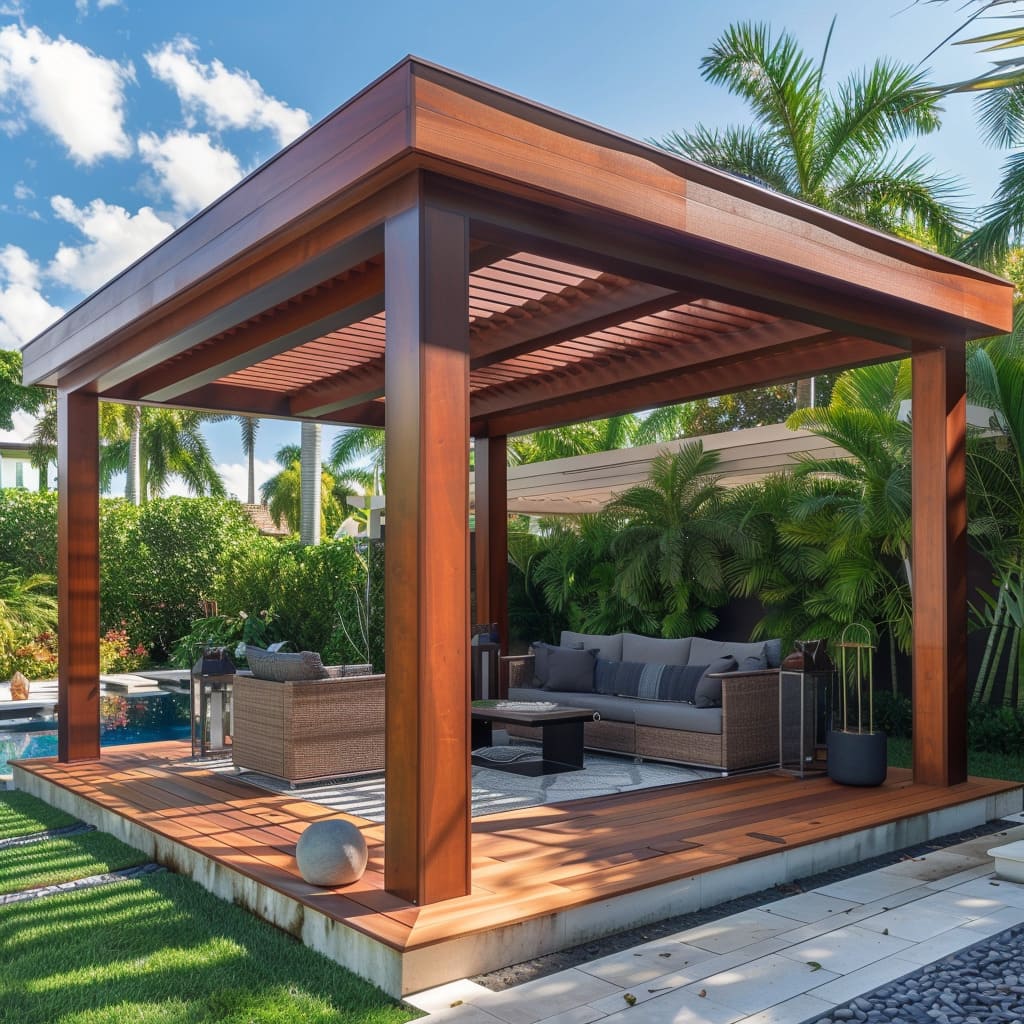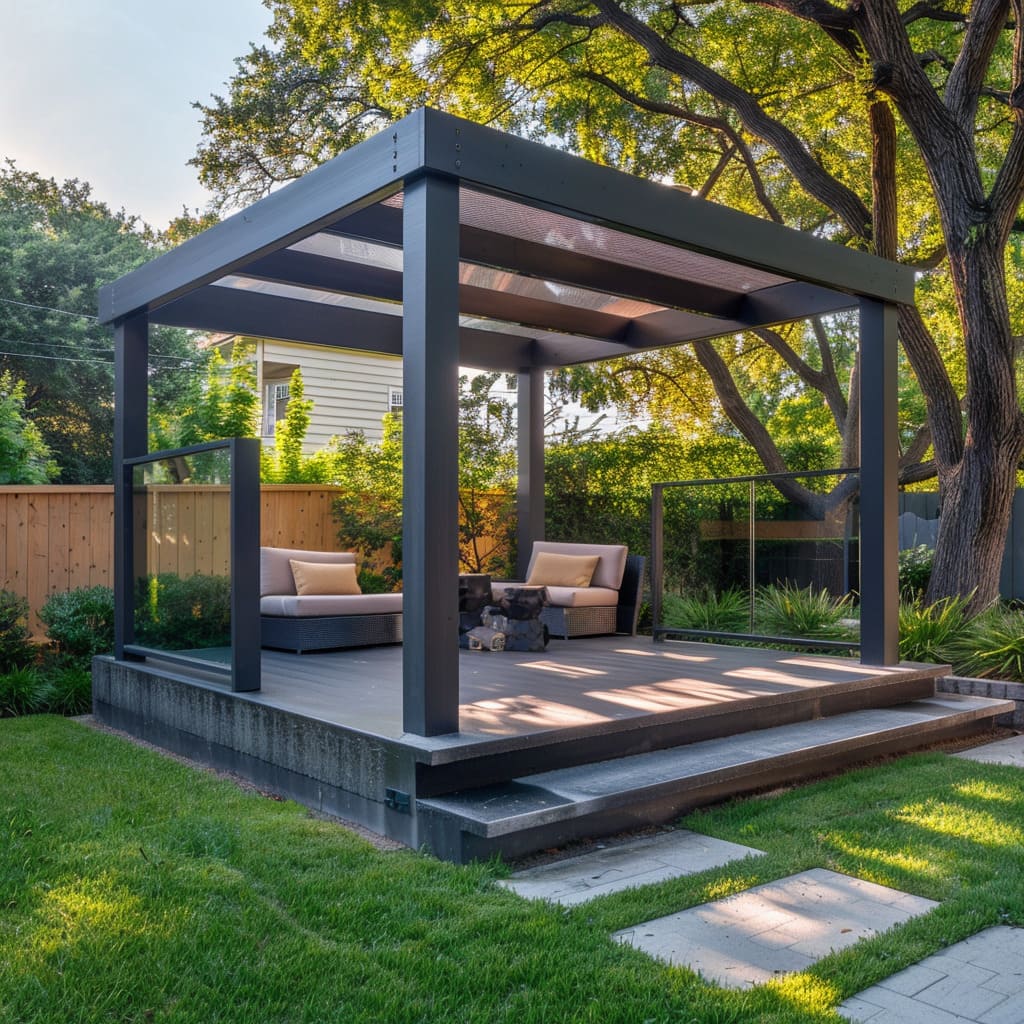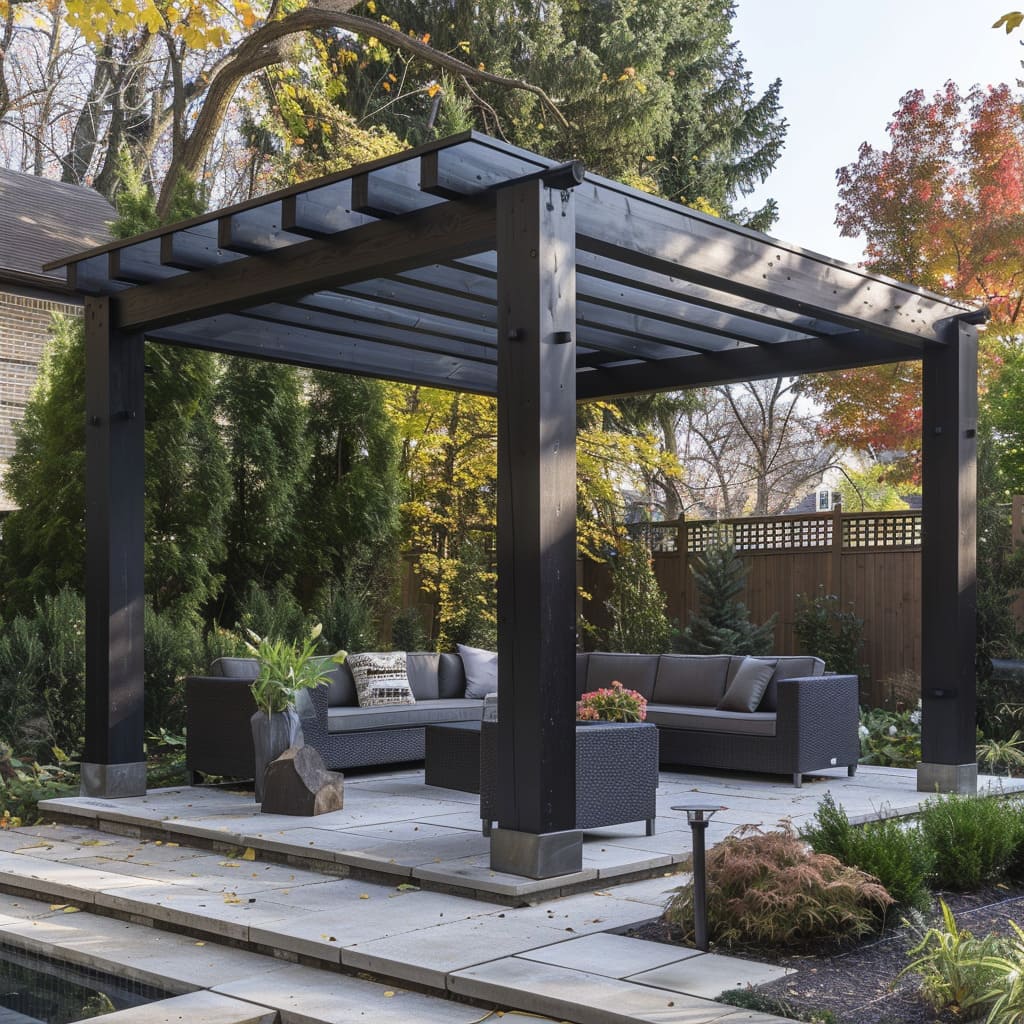Gazebos occupy a special place in our gardens. They are more than just a structure; they are a refuge, a place for gatherings, and a beacon of beauty.
However, over time, the cover of a gazebo can become faded or stained, diminishing its appeal. Dyeing the cover offers an effective solution, breathing new life into the fabric and, by extension, your outdoor space.
This article delves into the nitty-gritty of dyeing your gazebo cover, ensuring a fresh and inviting look.
Why Dye Your Gazebo Cover?
The decision to dye your gazebo cover stems from both aesthetic and practical considerations.


A freshly dyed cover can transform your gazebo’s look, making it stand out or blend beautifully with your garden’s theme.
Additionally, the right dye can add a layer of protection against the elements, enhancing the cover’s longevity.
Choosing the Right Dye for Your Gazebo Cover
The success of your dyeing project hinges on selecting the appropriate dye, especially when considering how to dye a gazebo cover. Outdoor fabrics often require dyes that can withstand weather changes.
Thus, exploring dyes specifically formulated for outdoor use is essential when planning to dye a gazebo cover. Consider the fabric of your gazebo cover, as this greatly influences the dye choice.
Cotton, polyester, and mixed fabrics each react differently to dyes, and some may need a dye fixative for lasting color.
Preparing Your Gazebo Cover for Dyeing
Preparation is key to achieving an even and lasting dye. Start by thoroughly cleaning the cover to remove dirt, grime, and organic residues.
Check the cover for any damage. Small tears or frays should be mended before dyeing to avoid further deterioration.
Tips for Dyeing the Cover for a Fresh Look
Dyeing your gazebo cover involves careful planning and execution. It’s a process that rewards patience and attention to detail.
- Setting up your workspace: Choose an area that is well-ventilated and free from the risk of staining valuable items. Cover the ground and nearby objects with drop cloths or plastic sheets.
- Applying the dye:Follow the instructions specific to your chosen dye carefully. Most outdoor fabric dyes require diluting with water. Use a clean spray bottle or a brush for application, depending on the dye’s consistency and your preference. Spray or paint the dye onto the fabric evenly, ensuring thorough coverage.
- Ensuring even coverage:For an even finish, apply the dye in sections, maintaining a wet edge to avoid streaking. Regularly step back to inspect your work from different angles, ensuring no spot has been missed or overly saturated.
Post-Dyeing Care and Maintenance
After dyeing, allow the cover to dry completely, away from direct sunlight to prevent uneven drying or fading. Some dyes require a post-treatment fixative, which helps lock in the color. Once cured, reinstall the cover on your gazebo.
Maintaining the vibrancy of your newly dyed cover involves periodic cleaning with gentle, non-abrasive solutions. Spot clean any new stains promptly to prevent setting.
Troubleshooting Common Dyeing Issues
Even with careful preparation, issues may arise. If you notice uneven patches or streaks, applying a second lighter coat can help even out the appearance.
Fading after a few weeks may indicate the need for a dye fixative or a more suitable dye choice for your fabric type.
Safety Precautions During the Dyeing Process
Ensuring safety during the dyeing process is paramount to prevent accidents and exposure to potentially harmful substances. Here are crucial safety measures to adhere to:


- Wear Protective Gear: Always wear gloves to protect your hands from direct contact with dyes and chemicals. Depending on the volatility of the substances used, a mask may also be necessary to avoid inhaling fumes. Protective eyewear is advisable to shield your eyes from splashes.
- Work in a Well-Ventilated Area: Dyes and fixatives can emit strong odors and toxic fumes. Conduct your dyeing project outdoors or in a well-ventilated room to ensure adequate air circulation, reducing the risk of inhaling hazardous chemicals.
- Follow Manufacturer Instructions: Each dye type comes with specific instructions regarding safe handling, mixing ratios, and application techniques. Adhering to these guidelines can minimize the risk of accidents and ensure the product’s efficacy.
- Safe Storage and Disposal: Keep dyes and related chemicals out of reach of children and pets. If you have leftover dye or chemicals, refer to local regulations on how to dispose of them properly. Avoid pouring them down the drain without knowing if they’re environmentally safe.
- Avoid Toxic Chemicals: Opt for non-toxic, environmentally-friendly dyes when possible. These are safer for personal use and less harmful to the environment.
By following these safety precautions, you can enjoy the creative process of dyeing your gazebo cover while safeguarding your health and the environment.


Cost Analysis of DIY Dyeing vs. Professional Services
When contemplating dyeing your gazebo cover, conducting a cost analysis is crucial. DIY dyeing typically requires an investment of approximately $30-$100 for materials and tools, such as dye, brushes, and protective equipment.
In contrast, hiring a professional for the job can significantly increase the expense, with costs ranging from $200-$500, depending on the complexity and size of the cover.
While the DIY approach can be more economical, it’s essential to balance the savings against the expertise and convenience offered by professional services.
Frequently Asked Questions (FAQs)
Can I dye a water-resistant gazebo cover?
Yes, but it requires specific types of dye and possibly a pre-treatment to ensure the dye adheres to the water-resistant coating.
How often should I re-dye my gazebo cover?
This depends on the cover’s exposure to elements and the dye quality. As a general rule, assess the need for re-dyeing annually.
Tips for choosing the right color for different garden styles?
Consider harmonizing with your garden’s dominant colors or choosing contrasting colors for a bold statement. Earth tones blend naturally, while brighter colors can add a focal point.
Conclusion
Dyeing your gazebo cover is a rewarding project that revives the beauty of your outdoor space.
It allows for creativity and personal expression through color. With the proper preparation, dye selection, and application process, you can achieve professional-looking results that elevate your gazebo’s appeal.
Embrace the journey of transforming your gazebo cover and enjoy the fresh, new look it brings to your garden sanctuary.



